Archives of Nursing Practice and Care
Comparison of perceptions of HIV/AIDS between Cameroonian, Honduran and American nursing students after Peer-led Education
Holly J Diesel1*, Donna H Taliaferro2 and Patrick M Ercole3
2Professional Consultant University of Phoenix, USA
3Director of Analytics Sansom Consulting, USA
*Corresponding author: Holly Johanna Diesel, Nursing, Goldfarb School of Nursing at Barnes-Jewish College, 4483 Duncan Ave. St. Louis, MO 63110, USA, Tel: 314 454 8471; E-mail: [email protected]
Cite this as
Diesel HJ, Taliaferro DH, Ercole PM (2017) Comparison of perceptions of HIV/AIDS between Cameroonian, Honduran and American nursing students after Peer-led Education. Arch Nurs Pract Care 3(1): 057-063. DOI: 10.17352/anpc.000027The study examined changes in HIV/AIDS-related knowledge, attitudes, and beliefs between cohorts of Cameroonian, Honduran, and American nursing students across iterations of a train-the-trainer program. Following a didactic course on HIV/AIDS, two subsets of American students led an educational workshop in Cameroon and Honduras. Fifty-three Cameroonian, 31 Honduran, and 33 American nursing students were evaluated prior to the course or workshop, at the program’s conclusion, and 60 days later. Students responded to surveys that measured stigma, willingness to provide care, attitude, and knowledge. Questionnaire scale scores differed significantly by country at each of the three assessment periods. All cohorts demonstrated an improvement in knowledge with varying levels of success. The workshop helped the American subset sustain a willingness to provide care and increased obstetrical-related HIV/AIDS knowledge more than the didactic course for American students or workshop for Cameroonian students. The American subset showed the greatest improvement in knowledge. Cross-cultural peer interaction is a constructive and valuable strategy for improving comprehension and perceptions of HIV/AIDS among student nurses and should be tailored to meet the personal and professional experiences of the students.
Introduction and Background
The global HIV pandemic continues to be a global challenge as we face at least 35 million persons infected with HIV worldwide [1]. Worldwide, 2.1 million people became newly infected with HIV in 2013, a decline of 38% from 2001, when there were 3.4 million. AIDS related deaths have fallen by 35% to 1.5 million since the peak in 2005 when the total was 2.4 million [1]. In 2013, approximately 38% of all adults living with HIV, and 24% of all children living with HIV were receiving treatment. Almost half of all people living with HIV are aware of their status [1].
Despite these improvements, HIV related stigma remains a serious problem for those affected by and infected with HIV, including caregivers. After 35 years of knowing about the disease, HIV/AIDS is still the most stigmatized disease in the world. Other investigators provided information that suggested that cultures, with differing customs and beliefs, further complicate the concept of stigmatization [2,3]. Nurses have been at the very forefront of providing care to people infected with HIV. The literature is replete with studies for the last four decades that demonstrated that nurses were hesitant to provide care for persons living with HIV/AIDS (PLWHA) for fear of acquiring the disease [3]. Significant percentages of nurses, ranging from 8% to 26%, stated that they had the right to decline providing care to patients with HIV/AIDS [4,5]. These negative attitudes towards patients with HIV/AIDS were identified in all the countries examined including Nigeria [6], Australia [7], Russia [3], and the US [8]. One of the causes for US and Indian nurses’ reluctance to care and negative attitudes toward people with HIV/AIDS was recognized as a lack of education [8,9].
HIV-stigma is a major reason why HIV continues to be a global epidemic. Interventions targeting HIV-stigma are therefore necessary [10]. Not only is stigma a global problem, but the inaccurate information about HIV/AIDS adds to that level of stigma. While the US has many laws to prevent discrimination, many global countries do not. We know that when society has a negative view of people living with HIV, this is often from a lack of understanding and fear of the unknown. That lack of knowledge will lead to continuing judgment of others and placing moral values onto others due to misunderstanding [11]. Education may be better in the US, but there still is a great deal of stigma here and abroad.
The knowledge and attitudes of nursing students towards persons living with HIV/AIDS have often been of concern for both nursing faculty and persons receiving care. Previous studies [2,9,12,13] demonstrated that nursing students were hesitant to provide care for fear of “getting the disease”. The Nations AIDS taskforce that the reluctance to care for persons living with HIV/AIDS results in poorer quality of care [14]. Creating learning experiences to prepare students for their professional nursing career in a diverse and global society is increasingly important. Incorporating global nursing experiences into nursing programs is in part based on population trends in the US, as well the demonstrated role of cultural competence in reducing the racial/ethnic disparities in health care access and outcomes [15]. In the US, only 19.5% of registered nurses identified themselves as a member of a racial/ethnic minority [16].
This study focused on nursing students in three countries, one in North America, one in Central America, a third in sub-Saharan Africa, and was concerned about the students’ future practice as licensed or practicing nurses as it might be impacted by attitudes, knowledge, and beliefs about HIV. In Cameroon, approximately 660,000 people are living with HIV, with a prevalence rate for adults of 4.8%. In Honduras, the prevalence rate is .4%, representing 23,000 people. The US has a similar prevalence rate of .4%, representing somewhere between 920,000 to 1,800,000 individuals [1].
Nursing educators are responsible to ensure that the curriculum provides students with an adequate knowledge of HIV/AIDS. Factual knowledge is a critical first step in order that students are able to deliver high quality care to persons living with HIV/AIDS; however, accurate knowledge alone is insufficient, and must be operationalized with care and compassion, and framed within a culturally appropriate context. This study examined the impact of a peer-to-peer training workshop on HIV/AIDS knowledge, attitudes, and beliefs for nursing students in Cameroon and Honduras.
Cultural context
The Republic of Cameroon has the fifth largest population in West Africa with a population of 20,128,000 with a current life expectancy of only 54 years [17]. It is estimated that 560,000 persons were living with HIV/AIDS in Cameroon in 2010, representing a prevalence rate of 5.1%, and it is projected that more than 37,000 will have lost their lives in 2010 [18]. Cameroon, like many other African nations is challenged with building capacity to respond to the epidemic. Cameroon has 12 schools, colleges, or universities that provide nursing education. Yearly, each of these educational organizations graduates 30 to 50 nurses with a variety of educational preparation. The most frequently occurring degree is the BSc.
In 2012, the total population of Honduras was approximately 7.7 million, with a life expectancy of 70 years. Honduras is one of the most resource poor countries in Latin America. More than half the population lives in poverty, which is further complicated with the world’s highest murder rate. There are 11 universities in Honduras, all of which are located in the larger cities. Approximately 25,600 people were living with HIV/AIDS with a prevalence rate of 0.5%.
The United States had a population approximately 311 million people in 2011, with a life expectancy of 78 years; 1.2 million people were living with HIV. In the US, entry level registered nursing students may attend diploma, associates or baccalaureate programs. In 2012, there were over 1800 schools of nursing [19]. The American students in this study were pursuing a baccalaureate degree in nursing program situated in a Midwestern major metropolitan area. One of the courses they were enrolled in was a seven week elective course titled HIV: Caring and Concepts which provided general information including the disease trajectory, care and management, and pertinent ethical issues. The teaching approaches included discussion, lecture, media and student projects, both as individuals and small groups. The students met after class to develop the modules they later would use to present content in Cameroon and Honduras.
Culture care theory
The theory of Culture Care Diversity and Universality emphasizes nursing as a means to know and help cultures [20] and to provide care measures in harmony with an individual’s or group’s cultural beliefs, practices, and values. Culturally based care factors are known to influence human responses to health, illness, well-being, or when confronted with death and disabilities. Leininger’s theory postulates that in order for nursing care to be meaningful and beneficial, it must be conceptualized in ways that show the interrelationships of care to culture, as well as to different cultures [20]. The theory includes three action modalities that are necessary for providing nursing care that is culturally congruent [21]. These modalities, or decision modes, help cultures retain, preserve, or maintain beneficial care beliefs and values. Beliefs and values enable people within a culture face handicaps and death, adapt or negotiate with others for culturally congruent care for their health or deal with illness or dying. Successfully facing these challenges allows people to change or restructure their ways of life and institutions for better health care practices and outcomes [20].
In addition to culture, another major factor of this theory pertains to social structure factors. Important social structure factors include religion or spirituality, kinship or social ties, politics, education, technology, economics, and political factors. The theory predicts that these factors influence health and well-being both directly and indirectly.
Purpose
The primary purpose of this quasi-experimental prospective cohort study design was to examine changes in HIV/AIDS knowledge, beliefs, and attitudes of HIV/AIDS between nursing students in Cameroon, Honduras, and the United States across cohorts of a peer-led, train-the-trainer four-day workshop. The workshop was an educational intervention developed to examine the effectiveness of knowledge transfer and subsequent changes in beliefs and attitudes in nursing students, and the long term retention of those changes. More specifically, the aims of the study were threefold: (1) collect baseline HIV-related knowledge, attitudes, and beliefs of nursing students from Cameroon, Honduras, and the United States; (2) assess the impact of the peer-led workshop on those traits for both groups; and (3) compare the resiliency of knowledge retention over a 60-day period of time.
Methods
The quasi-experimental prospective cohort design was employed to evaluate the effect of an educational intervention on student nurses’ knowledge, attitudes, and beliefs of HIV/AIDS among senior level nursing students. As an educational and training grant, IRB groups in Cameroon, Honduras, and United States were provided all proper ethical and educational reviews and acceptances. To prepare for these various train-the-trainer programs, the US students were prepared with content knowledge, teaching practices and practice activities. Six weeks before the trip, US students participated in weekly learning activities to learn more about HIV, cultural influences, and classroom expectations. Cultural contexts were discussed as well as language reviews before traveling to the countries. Inclusion criteria for all students was that they were in nursing program and spoke and read English. Faculty were available during the educational sessions to provide support but did not engage in the teaching.
Sample and setting
Cameroonian students were on a weeklong break from the academic term and voluntarily chose to participate in a four-day workshop on HIV/AIDS with their peers from the United States. A total of 53 Cameroonian nursing students participated in the HIV/AIDS workshop located on their West African campus. Honduran nursing students participated in the four-day workshop during the regularly scheduled semester timeframe in a diploma program of nursing. Thirty one Honduran students participated on their school campus located in Santa Barbara, Honduras. American students enrolled a two year completion baccalaureate nursing program participated during regularly scheduled classes during the term. Of the original 33 American students enrolled in the course, a subset of 8 students then participated in the immersion experience in Cameroon, and 4 different students participated likewise in Honduras. The American students completed the surveys on the first night of a seven week elective course focused on HIV/AIDS, at the end of that course, and again 60 days later. The Cameroonian and Honduran nursing students completed the same surveys just prior to a four day workshop on care of persons living with HIV/AIDS provided by the US students, at the end of the educational intervention, and again 60 days later.
Study inclusion criteria across all geographical settings were enrollment and maintenance of good standing to their respective academic institution, a willingness to participate in the study, as well as attendance of the training or educational curriculum. Demographic exclusion criteria were not applied, including gender, race/ethnicity, or age; only lack of survey completion rendered a participant to be excluded. Survey participation by the students, Cameroonian, Honduran, and American, varied at each stage of the study period. Among the original 54 Cameroonian nursing students, 41 students completed the full set of surveys at the three study periods. All of the Honduran students completed the full set of surveys at all three study periods. Of the 33 US students, the 8 immersion students were excluded from these analyses [22]. Excluding 1 participant for lack of sufficient data, 24 American participants completed the surveys at baseline, post-intervention, and follow-up. The final dataset analyzed 41 Cameroonian, 31 Honduran, and 24 American nursing student participants who completed the set of surveys at all three study periods.
Instruments
All students in Cameroon, Honduras, and the US were asked to complete a set of five questionnaires. The set of surveys included a background questionnaire as well as five stand-alone instruments: HIV/AIDS Stigma Instrument – Nursing Student (HASI-NS) [23], Nurse Willingness Questionnaire (NWQ) [24], AIDS Attitude Scale (AAS) [4], AIDS Knowledge Scale (AKS) [25], and the Obstetrical Knowledge Scale (OKS, a self-developed instrument).
The questionnaire included demographic items and HIV status including risk exposures. The background questionnaire included demographic items, as well as the student’s HIV status, history of needle stick injuries, blood donation, and blood transfusions. Three questions addressed participant’s personal and professional experience with HIV/AIDS: How many individuals do you personally know who are HIV positive? Do you personally know someone who has died from an AIDS-related complication? Approximately, to how many HIV-infect patients have you knowingly delivered nursing care? These items were added to expose variation to knowledge acquisition and retention of workshop content.
The HASI-NS is an instrument used to measure HIV/AIDS-related stigma as perpetrated and experienced by nursing students. Initial qualitative data were collected in five countries in southern Africa from 2004 to 2006. The final 19-item instrument, the HIV/AIDS Stigma Instrument - Nurse (HASI-N), comprised of two factors (Nurses Stigmatizing Patients and Nurses Being Stigmatized) with a Cronbach alpha of 0.90. Further revisions were made for use with nursing students [23].
The Nurse Willingness Questionnaire (NWQ) [24] was developed in the US to measure nurses’ willingness to provide direct care activities to a patient with AIDS. Previous studies suggest that the NWQ is a reliable and valid instrument for evaluation of nursing students as well, with Cronbach’s alpha of .94 [26].
The AIDS Knowledge Scale (AKS) [25] was developed to assess knowledge of HIV/AIDS via 24 true/false questions. Examples of the true/false questions include, “An HIV positive person can appear and feel healthy” and “a diaphragm does not reduce HIV risk of infection”. The instrument has been shown to provide good content validity after review by an expert panel, and to have reliability of .70 or greater in previous studies [27,28].
The AIDS Attitude Scale (AAS) uses a 5-point Likert scale (1 = strongly agree to 5 = strongly disagree) to rate 21 items [4]. Examples of the statements include, “I would not like to have a friend who is a known homosexual” and “most people with HIV/AIDS have only themselves to blame”. Reliability coefficients ranged from .85 to .90 and validity was confirmed by review of the scale in three rounds by separate groups of nursing faculty [4].
The Obstetrical Knowledge Scale (OKS) was developed by the authors to specifically measure changes in the participants’ knowledge of care of the obstetrical patient infected with HIV as well as feeding options for the newborn. Validity was assessed by an expert review panel of maternal-child faculty. No reliability information currently exists for the survey.
Prior to the beginning of each workshop, the project investigators explained the program to the participants as well as the research protocols. The students in Cameroon and Honduras were asked to complete the survey set. The investigators conveyed that their participation was voluntary and that no academic repercussions or ability to fully participate in the workshop would occur regardless of their decisions to sign or decline the informed consent. Participants were randomly assigned in small groups of eight or fewer for the remainder of the workshop. Each small group was led by a US student who presented the contents of the workshop and facilitated discussion. The US students had prepared content that was tailored to each country. General discussions were held to learn the content. Country myths were discussed. When questions arose that the students could not answer, the faculty were there to provide assistance. When the workshop concluded the participants completed the set of questionnaires. The set of questionnaires was repeated again 60 days later.
Data management and analysis
Univariate summary statistics were computed for demographic and HIV/AIDS experience variables and are reported in table 1. Instrument scale scores were examined by study period across country, as well as by demographic and HIV/AIDS experience variables of interest via Chi-square, Kruskal-Wallis, and repeated measures analysis of variance tests. Alpha was preset at 5% for all testing of significance. All analyses were performed using IBM SPSS Statistics for Windows (IBM Corporation, Somers, NY, USA).
Results
The three sample groups differed statistically by age, gender, relationship status, HIV status, knowing someone HIV-positive, knowing someone who has died of AIDS complication, as well as knowingly given nursing care to someone with HIV/AIDS. All were significantly different except for gender and sexual orientation (Table 1).
Each of the five surveys will be discussed separately. The HASI-NS score differed by country (p<0.001), but not over time, as shown in figure 1. The score showed high initial levels of perceived stigma for the Cameroonian students with little change at either of the posttest assessments. In comparison, the students from the US and Honduras had significantly lower baseline scores with minimal change at either of the posttest points. Participants without personal or professional experience with persons living with HIV/AIDS (PLWHA) reported less perceived stigma at the follow-up assessment.
The participants from Cameroon and Honduras reported poor initial attitude scores regarding PLWHA, with only minor changes identified after the intervention. Figure 2 demonstrates these changes. The participants from US had positive initial attitudes scores that did not change over time. Again, the mean scores of the AAS differed by country, but less so over time (p < 0.0001).
The NWQ score, seen below in figure 3, changed over time (p= 0.001) with sizeable increases in the participant’s willingness to provide care following the intervention for both US and Cameroonian nursing students, while the Honduran nursing students demonstrated virtually no change at the three points of measure. This supportive feeling declined slightly at follow up for both the US and the Cameroonian nursing students. This could be due to a language barrier with the Honduran students during translation. While everything was translated into Spanish, there could have been some nuisances that could have made the information unclear.
The AKS score showed tangible improvement in AIDS-related knowledge following the intervention. The comprehension scores decreased slightly at follow-up. Participants demonstrated an improvement in knowledge in the AKS as a result of the workshop with some drop at follow-up. However, none of the changes were significant (Figure 4).
The OKS score also highlighted evident improvement in obstetrical-specific AIDS-related information after the workshop for the US and Cameroonian nursing students. The improvement in knowledge for the Honduran nursing students was negligible. This knowledge was mostly retained at the time of delayed follow-up. Participants demonstrated an improvement in knowledge for the OKS as a result of the workshop with some drop at follow-up. Those with personal and professional experience with PLWHA had better knowledge score increases at the first post-test and retention of knowledge at the final post-post-test(Figure 5).
Discussion
The peer-to-peer training has been demonstrated to be an effective method of learning in a variety of settings and professions [29-32]. This study also demonstrated that same understanding with students from the US, Cameroon and Honduras as it improved the knowledge and changed the attitudes and beliefs of the students who participated. The results presented here provide encouraging evidence that nursing students can be an effective resource in the transmission of knowledge to other nursing students. Nursing students may relate better to their own peers rather than a faculty member lecturing on content that may or may not be accurate based on their opinions. The informal discussion lends itself to asking and addressing questions that are controversial, misunderstood, or misguided. The major benefit of this type of education is to counteract any misinformation that may be held by others. One of the myths the Cameroon students discussed was that the “US uses Africa people to test all the drugs and then uses them only on US patients”. Another comment was that “US only gives us the drugs that don’t work in the US”. “Many of the HIV drugs kill you”. “Having sex with a virgin will keep you from getting AIDS”. These folklores or myths can be discussed among peers and opinions changed when correct knowledge is provided. The innovative approach used in this study is both cost effective and engaging. Content may be prepared in advance by an instructor, but then travels much faster through student conversations and peer-led Teaching. Through targeted topics with free-flowing agenda, the resulting student engagement fostered through individuals identifying their own learning needs in a setting that is safe and without the high stakes that are perceived when material is presented by faculty. Some faculty in other countries hold the same beliefs and misinformation as the students. Helping to share the correct knowledge will help them to share that with other students in their programs.
Limitations
As with any research study, there are limitations to the process. With the Cameroon and the Honduras studies, the students were in different programs of study. While the content delivered was the same, the actual delivery could have been different. The fact that students delivered the content could be a limitation as well. This could be especially true with the Honduran students. While the US students were delivering the information in Spanish, there could have been some translation issues. While faculty were available during the content delivery, the students presented the content from their level of knowledge.
Implications for practice
Practice brings a plethora of understanding in caring for HIV/AIDS. The knowledge one brings to the clinical area will impact the role of HIV testing, HIV/AIDS care, and assisting caregivers in their role. Access to care is critical in developing countries and understanding how the need for antiretroviral medications are to the health of individuals is necessary within all clinical setting. Helping to change beliefs and practices will only improve the health and wellbeing of those infected and affected with HIV. In addition, finding new ways to educate and motivate new nursing students to practice using evidence based information is a challenge.
Implications for education
Building capacity for HIV/AIDS education among nursing students is an imperative strategy for global prevention and treatment of PLWHA. The focus and approach of education should be targeted to address inadequacies within a culture and tailored to meet the personal and professional experiences of students regardless of national sero-prevalence. Providing clear and accurate information will help to reduce the myths surrounding the disease and provide a more positive view in caring for HIV/AIDS patients within the community. Educational interventions which are based on train-the-trainers and peer-led learning approaches are not only practicable, they are effective as well.
Implications for future research
Implications for future research should include additional cultural comparisons, other clinical and caregiver roles, as well as behavior and competency follow-up of licensed nurses. Long term studies following the students one and two years after the intervention might reveal a new understanding of how stigma was reduced over time. Once students have transitioned in their roles as practicing nurses, it might be relevant to see how their understanding has changed after caring for those living with HIV/AIDS.
Conclusions
Building capacity for HIV/AIDS education among nursing students is an effective strategy across the globe, especially in areas that lack an abundance of resources including highly prepared faculty and educators. The focus and approach of such instruction should be tailored to meet the personal and professional experiences of such students. The innovative and effective method of peer-to-peer training can also be applied within a resource-limited setting to expand the message’s impact. Additional layers of student cohorts or variation across setting location may demonstrate this training method’s influence in educating the nursing workforce.
Cameroonian perceptions of perceived stigma and attitude regarding HIV/AIDS were substantially worse than those from the nations with lower sero-prevalence. Honduran willingness to provide care was higher, but eventually met by the other cohorts following the educational curriculum. Gains by the Cameroonian and American cohorts dropped off at the delayed follow-up. Both the AKS and the OKS questionnaires highlighted a lag in knowledge amongst the Honduran participants, who were in a less rigorous curriculum. American scores for stigma, attitude, and general knowledge were relatively unchanged by the didactic educational method.
The study was fully funded by the Goldfarb School of Nursing Research Fund. The authors appreciate the generous assistance our colleagues in Cameroon and Honduras for facilitating planning and on-site logistics. We also wish to thank the nursing students from Cameroon, Honduras, and the United States, as well as Dr. Neal Rosenburg, for their participation and contributions in this study.
- UNAIDS (2014) UNAIDS Report Shows That 19 Million of the 35 Million People living with HIV Today Do Not Know That They Have the Virus.
- Philip J, Chadee D, Yearwood RP (2014) Health care students' reactions towards HIV patients: examining prejudice, emotions, attribution of blame and willingness to interact with HIV/AIDS patients. AIDS Care, 26: 1236-1241. Link: https://goo.gl/KSVvRA
- Suominen T, Laakkonen L, Lioznov D, Polukova M, Nikolaenko S, et al. (2015) Russian nursing students' knowledge level and attitudes in the context of human immunodeficiency virus (HIV) - a descriptive study. BioMed Central Nursing 14:1 Link: https://goo.gl/RfC8SS
- Froman RD, Owen SV, Daisy C (1992) Development of a measure of attitudes toward persons with AIDS. Journal of Nursing Scholarship 24: 149-152. Link: https://goo.gl/4SXiaE
- Rosenburg N, Taliaferro D, Ercole P (2012) HIV-Related stigma among nursing students in Cameroon. Journal of the Association of Nurses in AIDS Care 23: 170-176. Link: https://goo.gl/7Eizpe
- Adepoju JA, (2006) Knowledge of HIV/AIDS among nurses in southwestern Nigeria. The Association of Black Nursing Faculty in Higher Education 17: 137-142. Link: https://goo.gl/eU3FT8
- Pickles D, King L, de Lacey S (2017) Culturally construed beliefs and perceptions of nursing students and the stigma impacting on people live with AIDS: A qualitative study. Nurse Education Today 49:39-44. Link: https://goo.gl/mu5u41
- Frye V, Paige JQ, Gordon S, Matthews D, Musgrave G, et al. (2017) Developing a community-level andti-HIV/AIDS stigma and homophobia intervention in New Your city: The project CHHANGE model. (2017). Evaluation and Program Planning, 63: 45-53. Link: https://goo.gl/UVwJkN
- Shah SM, Heylen E, Srinivansan K, Perumpil S, & Ekstrand, et al. (2014) Reducing HIV stigma anmong nursing students: A brief intervention. Western Journal of Nursing Research, 36: 1323-1337. Link: https://goo.gl/PgW6Aq
- Brent R (2016) The value of reducing stigma in HIV. Social Science & Medicine 151: 233-240 Link: https://goo.gl/RbQ6Mr
- UNAIDS (2012) Key Programmes to Reduce Stigma and Discrimination and Increase Access to Justice in National HIV Responses.
- Rosenburg N, Taliaferro D, Ercole P (2011) HIV-Related stigma among nursing students in Cameroon. Journal of the Association of Nurses in AIDS Care 23: 170-176. Link: https://goo.gl/rMbpx6
- Shah SM, Heylen E, Srinivasan K, Perumpil S, Ekstrand ML (2014) Reducing HIV stigma among nursing students: A brief intervention. Western Journal of Nursing Research 36: 1323-1337. Link: https://goo.gl/BvB1ss
- UNAIDS (2013) UNAIDS Report on the Global AIDS Epidemic 2013.
- Wagner A (2008) Marketplace: Cultural training for nurses [radio broadcast]. National Public Radio. Link: https://goo.gl/ZJ1Ha5
- Budden JS, Zhong EH, Moulton P, Cimiotti JP (2013) Highlights of the national workforce survey of registered nurses. Journal of Nursing Regulation 4: 5-14. Link: https://goo.gl/w5QPZw
- Joint United Nations Programme on HIV/AIDS. (2009) Cameroon. Link: https://goo.gl/Qs1WUs
- Central Intelligence Agency (2017) Africa: Cameroon. Link: https://goo.gl/pEZHia
- NLN (2012) Annual Survey of Schools of Nursing, Academic Year 2011-2012. Link: https://goo.gl/Fv3552
- Leniniger M (1988) Leininger's theory of Nursing: Cultural care diversity and universality. Nursing Science Quarterly, 1: 152-160. Link: https://goo.gl/McHkJn
- Leininger M M (1991). Transcultural nursing goals and challenges for 1991 and beyond. Journal of Transcultural Nursing, 2: 1-2.
- Diesel H, Ercole P, Taliaferro D (2012) Changing knowledge, attitudes, and beliefs via an immersion experience. International Journal for Human Caring, 17: 71-78.
- Uys L, Holzemer W, Chirwa M, Dlamini P, Greeff M, et al. (2009) The development and validation of the HIV/AIDS Stigma Instrument-Nurse (HASI-N). AIDS Care, 21: 150-159. Link: https://goo.gl/4ZmQWX
- Dubbert PM, Kemppainen JK, White-Taylor D (1994) Development of a measure of willingness to provide nursing care to AIDS patient. Nursing Administration Quarterly 18: 16-21. Link: https://goo.gl/3ZTk3F
- Jemmott JB, Freleicher J, Jemmott LS (1992) Perceived risk of infection and attitudes toward risk groups: Determinants of nurses' behavioral intentions regarding AIDS patients. Research in Nursing and Health 15: 295-301. Link: https://goo.gl/mCrx2T
- Suominen T, Muinonen U, Valimaki M, Peate I, Lormann C, et al. (2000) Nurses' attitudes towards the care of HIV and AIDS patients. Hoitotiede, 12: 184-194. Link: https://goo.gl/i3giHa
- Leasure R, McKenney LA, Merril A (1995) Factors influencing baccalaureate nursing students' attitudes towards persons living with AIDS. Journal of Professional Nursing 11: 299-305. Link: https://goo.gl/zmrbtC
- Yinlan L, Scott CS, Li L (2008) Chinese nursing students' HIV/AIDS knowledge, attitudes and practice intentions. Applied Nursing Research 21: 147-152. Link: https://goo.gl/a8tAqB
- Thato R, Penrose J (2013) A brief, peer-led HIV prevention program for college students in Bangkok, Thailand. North American Society for Pediatric and Adolescent Gynecology 26: 58-65. Link: https://goo.gl/aSwAib
- Madah-Amiri D, Clausen T, Lobmaier P (2016) Utilizing a train-the-trainer model for multi-site naloxone distribution programs. Drug and Alcohol Dependence, 163: 153-156. Link: https://goo.gl/nWMy4E
- Ibrahim N, Rampal L, Jamil Z, Zain AM (2012) Effectiveness of peer-led education on knowledge, attitude and risk behavior practices related to HIV among students a Malaysian public university - a randomized controlled trial. Preventive Medicine 55: 505-510. Link: https://goo.gl/bcs6eE
- Llambi L, Barros M, Parodi C, Cora,M, Garces G (2017) Teaching tobacco cessation to large student cohorts through train-the-trainers and problem based learning strategies. Education for Health 29: 89-94. Link: https://goo.gl/QbfHTx
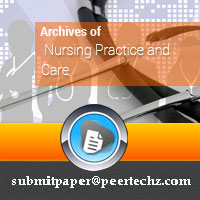
Article Alerts
Subscribe to our articles alerts and stay tuned.
 This work is licensed under a Creative Commons Attribution 4.0 International License.
This work is licensed under a Creative Commons Attribution 4.0 International License.
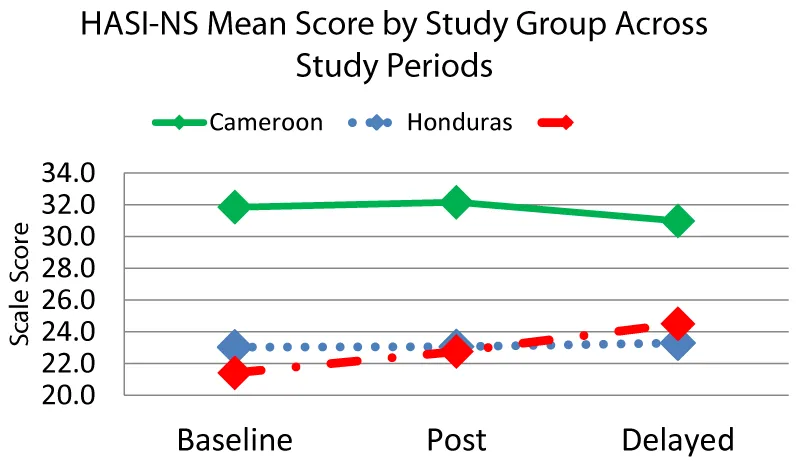
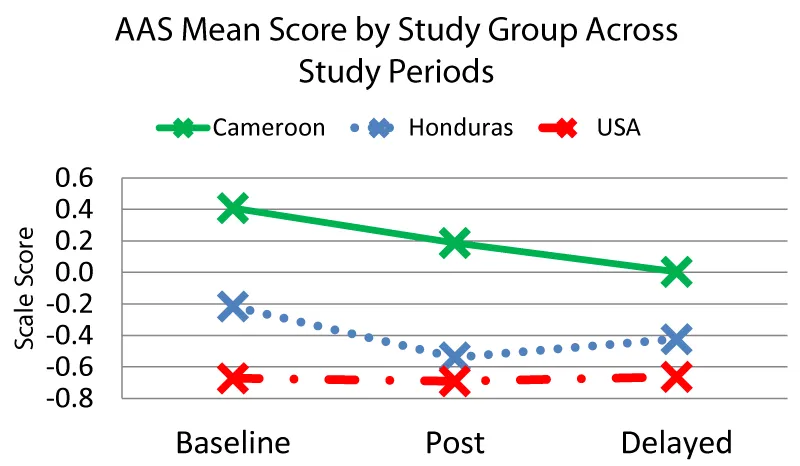
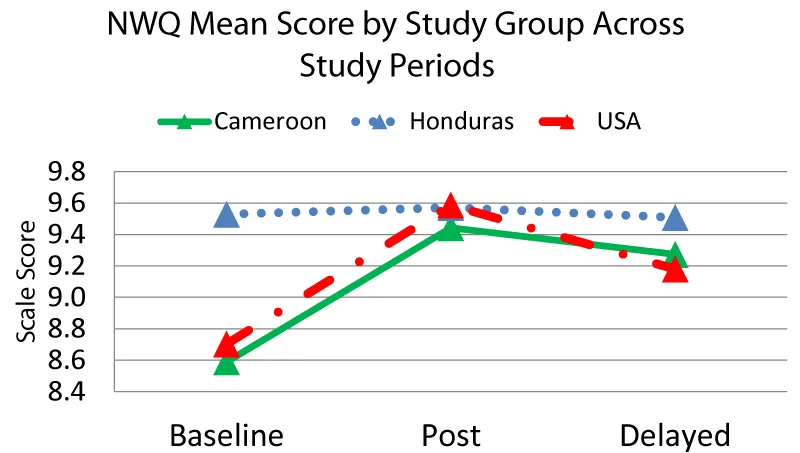
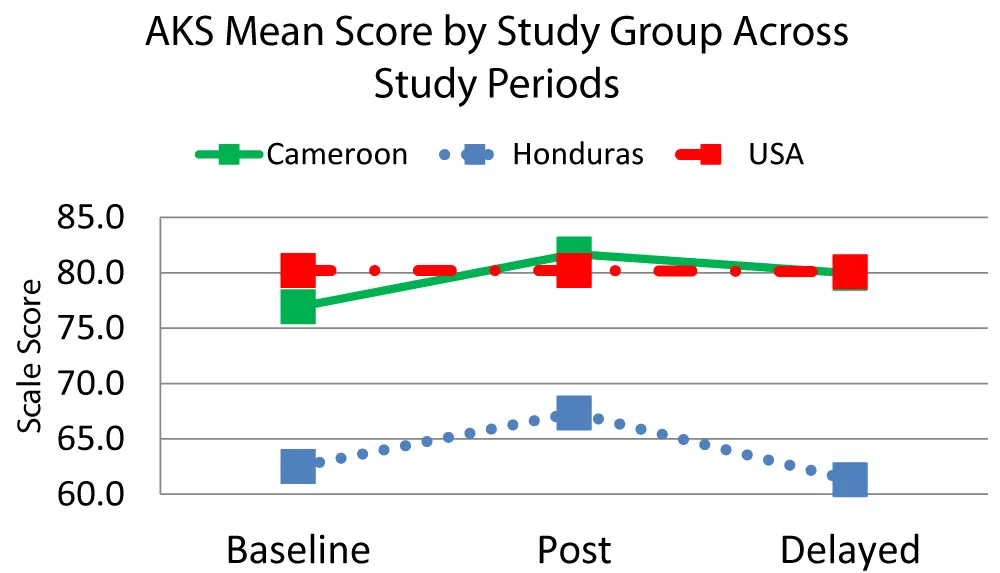
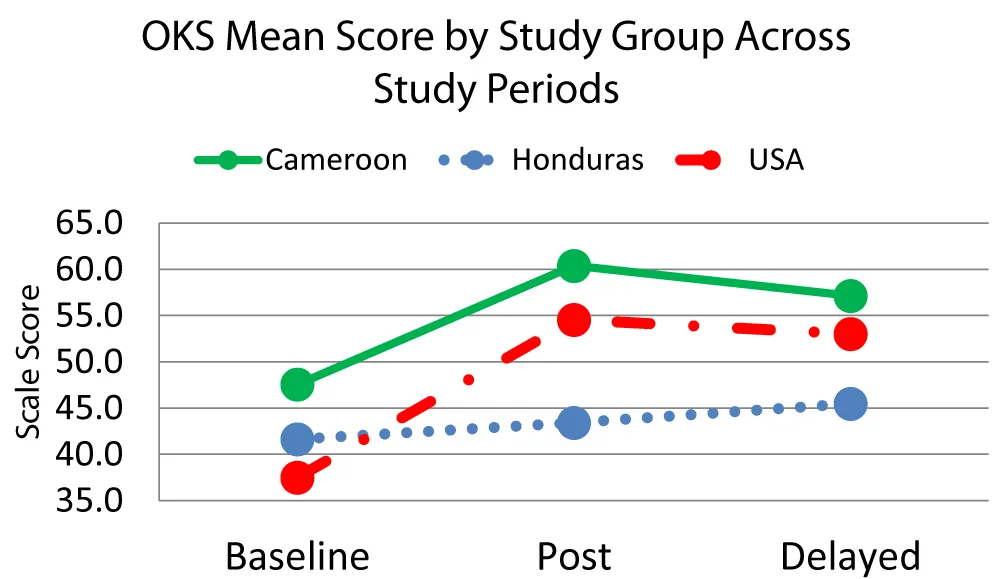
 Save to Mendeley
Save to Mendeley
